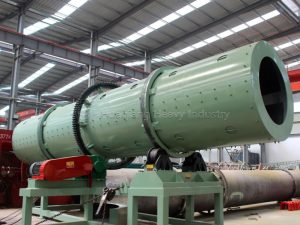In the precision arena of modern fertilizer production, the rotary drum granulator is undoubtedly one of the most dazzling stars. How does this seemingly simple rotating drum magically transform powdered raw materials into uniform, plump fertilizer granules?

The appeal of the rotary drum granulator lies in its ingenious working principle. When the raw powder enters the slowly rotating drum, it is like participating in a carefully choreographed dance. The atomizing spray system evenly distributes the liquid material. Surface tension causes the tiny particles to “hold hands” with each other, gradually agglomerating into nuclei. As the drum rotates continuously, these nuclei grow like a snowball, forming uniformly sized spherical particles.
But the rotary drum granulator is never a lone hero. At the front end, fertilizer crushers and screens prepare the raw materials into uniformly sized particles. At the back end, fertilizer dryers and coolers solidify the newly formed granules. An automated batching system acts as a precise conductor, ensuring the perfect balance of nutrients. And a coating machine provides a protective coating for the finished granules, preventing clumping and controlling the rate of nutrient release.
The greatest advantage of this granulation method lies in its exceptional flexibility. Whether it’s organic fertilizer or compound fertilizer, the drum granulator is capable of handling it. By adjusting the inclination angle, rotation speed, and residence time, the particle size and strength of the granules can be precisely controlled to meet the needs of different crops.


